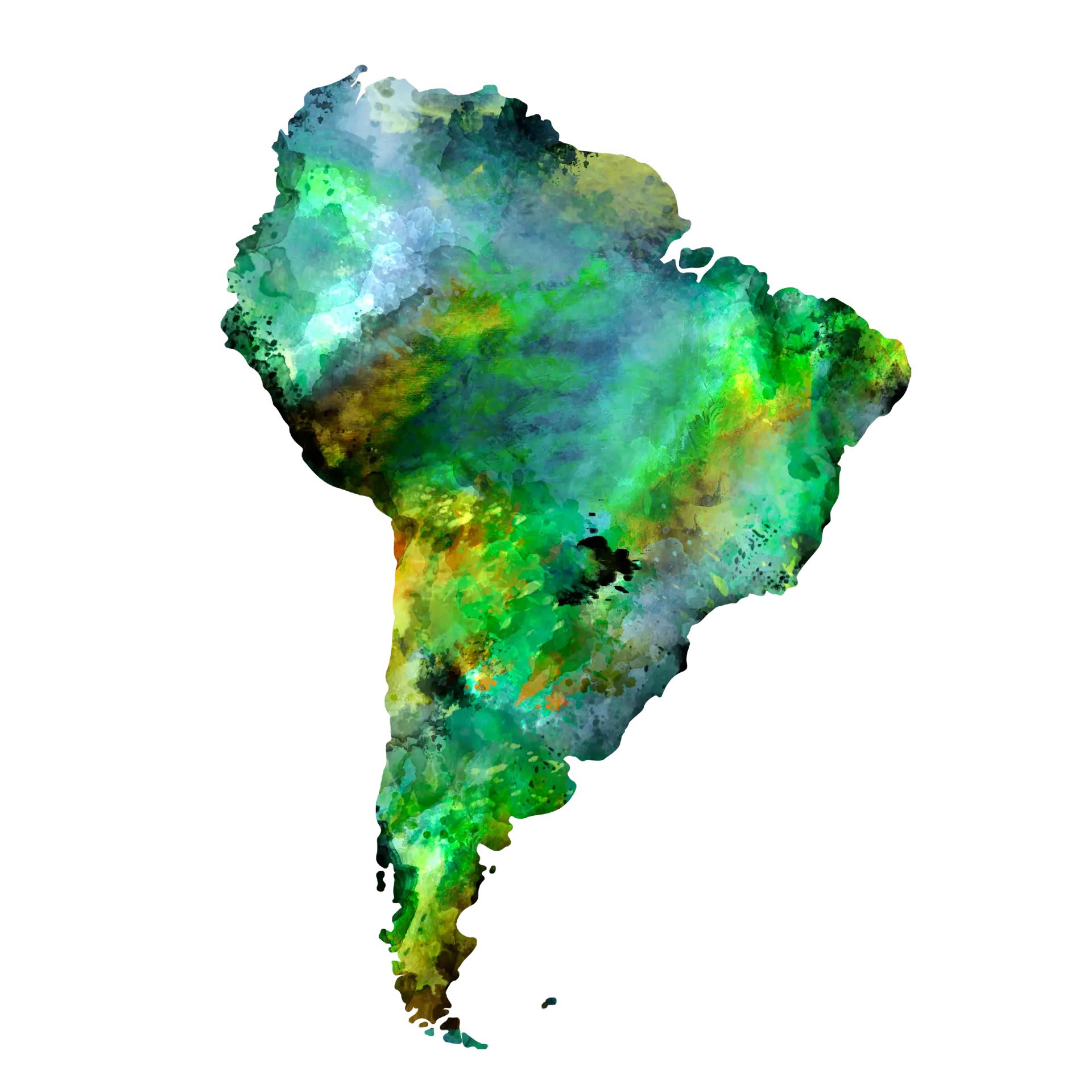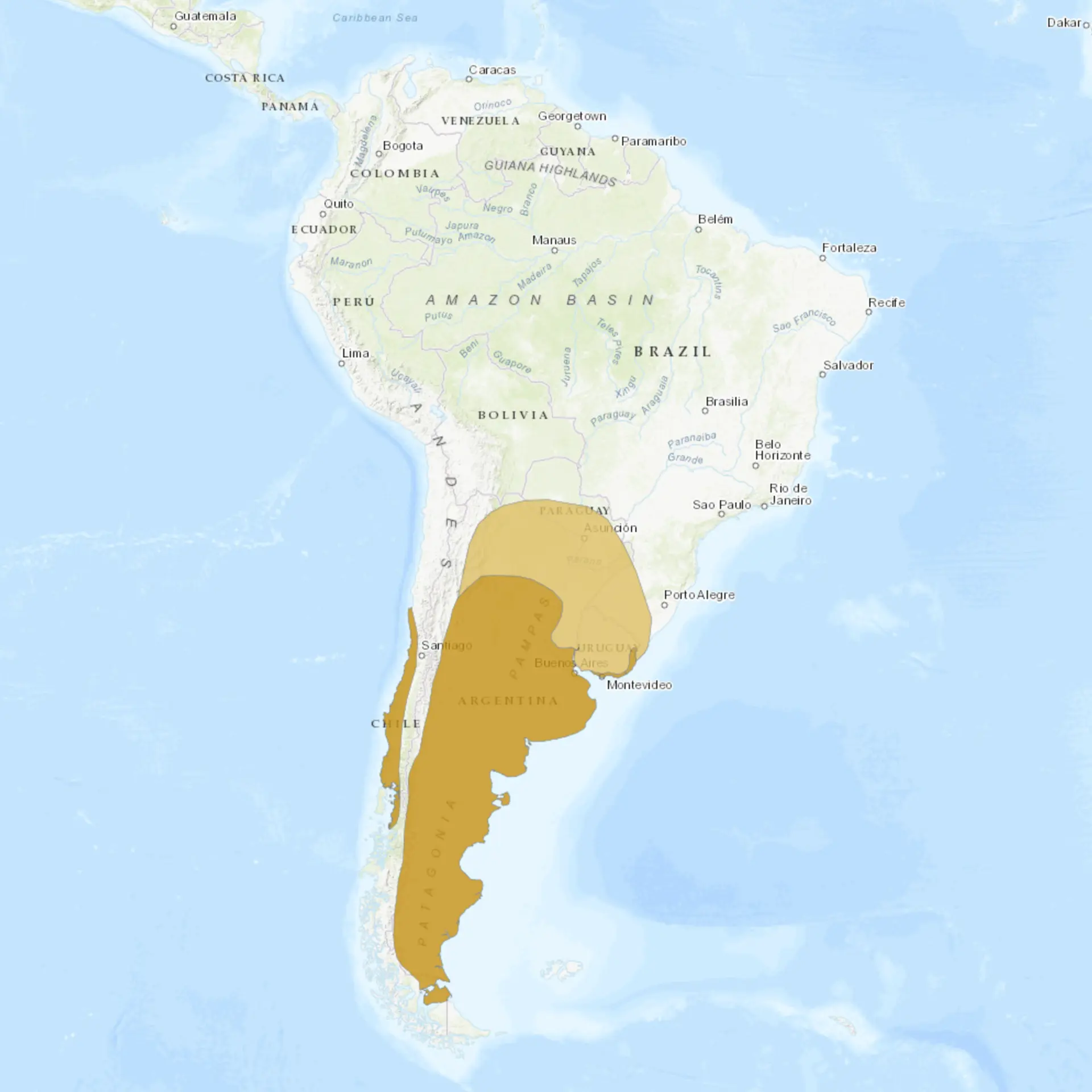Overview
The Argentine ruddy duck (Oxyura vittata) is a small, stiff-tailed waterfowl species native to South America. Known for its striking breeding plumage, males exhibit a deep chestnut-red body with a vivid sky-blue bill during the mating season, while females are more subdued with mottled brown plumage. These ducks are primarily aquatic, spending most of their time in freshwater lakes, ponds, and marshes, where they dive to forage for food. Their stiff, upward-pointed tails and compact bodies make them excellent divers but less adept at walking on land.
This species is highly adapted to life on the water, feeding mainly on aquatic plants, insects, and small invertebrates. During the breeding season, males are territorial and perform elaborate courtship displays, often including tail cocking and vocalizations to attract females. Argentine ruddy ducks are generally solitary or found in small groups, though they may gather in larger flocks outside the breeding season. They are non-migratory but may move locally in response to changes in water availability or habitat conditions.
The Argentine ruddy duck is an important part of its ecosystem, contributing to the balance of aquatic vegetation and controlling insect populations. While it is not globally threatened, its wetland habitats are increasingly at risk due to human activities such as agriculture, drainage, and pollution. This species has also gained attention for its role in hybridization with other stiff-tailed ducks, such as the white-headed duck (Oxyura leucocephala), where introduced populations overlap. Conservation efforts focus on habitat protection to ensure the survival of this unique duck.
Taxonomy
Kingdom
Phylum
Class
Order
Family
Genus
Species
Type
Current distribution:
The Argentine ruddy duck is widespread across southern South America, extending from southern Brazil and Paraguay to Argentina, Chile, and Uruguay. Populations are generally stable, though their density varies depending on local habitat conditions and food availability. This species is primarily sedentary, but some populations undertake short local movements in response to seasonal water availability or habitat quality changes. In some areas, its range overlaps with other stiff-tailed duck species, creating potential for competition or hybridization.
Although relatively common in its range, the Argentine ruddy duck is sensitive to wetland loss and pollution. Agricultural expansion, drainage of wetlands, and contamination of water sources have fragmented habitats in certain regions. Additionally, introduced populations in Europe have caused conservation concerns, particularly regarding hybridization with the endangered white-headed duck (Oxyura leucocephala). Ongoing monitoring of wild populations is necessary to track changes in distribution and assess potential conservation challenges.
Physical Description:
The Argentine ruddy duck is a small, compact bird with a distinctive appearance, particularly in males during the breeding season. Males have a bright chestnut-red body, a contrasting black head, and a pale blue bill that stands out against their dark plumage. Outside of the breeding season, males lose their vibrant colors and adopt a duller brown coloration similar to that of females. Females and juveniles are cryptically patterned with mottled brown plumage, featuring a dark stripe running horizontally across their cheeks.
Both sexes have stiff, spiky tails, often held upright or used as a rudder during diving. Their legs are positioned far back on their bodies, which aids in swimming but makes walking on land awkward. These ducks have relatively small wings, giving them a fast but labored flight, which they primarily use to move between water bodies. Their blue bill in males is distinctive, making them easily recognizable among other duck species.

Lifespan: Wild: ~5 Years || Captivity: ~12 Years

Weight: Male: 1.0–1.5 lbs (0.45–0.68 kg) || Female: 0.9–1.3 lbs (0.41–0.59 kg)

Length: Male: 14–16 in (36–41 cm) || Female: 13–15 in (33–38 cm)

Wingspan: Male & Female: 22–26 in (56–66 cm)

Top Speed: 50 mph (80 km/h)
Native Habitat:
The Argentine ruddy duck is native to wetlands, lakes, and marshes across much of southern South America, particularly in Argentina, Chile, Uruguay, and southern Brazil. It prefers freshwater habitats with abundant vegetation and open water, often inhabiting shallow lakes, ponds, and slow-moving rivers. These wetlands provide the duck with ample food resources, shelter, and nesting opportunities. During the breeding season, the species prefers areas with dense vegetation, which offers protection for nests and cover from predators.
Outside the breeding season, the duck may utilize more open water bodies, including larger lakes and reservoirs. Its habitat requirements make it highly dependent on wetland ecosystems, which are increasingly threatened by human activities. Seasonal variations in water levels also influence the distribution and abundance of these ducks, with some populations moving locally in response to droughts or flooding. The species is well-adapted to its aquatic habitat but faces challenges from habitat degradation and competition with invasive species.
Biomes:
WWF Biomes:
Biogeographical Realms:
Continents:
Diet:
Diet & Feeding Habits:
The Argentine ruddy duck is primarily omnivorous, feeding on a mix of aquatic vegetation, seeds, and small invertebrates. Its diet consists mainly of submerged plants, algae, and seeds, which it forages by diving and using its wide, flattened bill to filter food from the water. Small aquatic insects, crustaceans, and mollusks are also essential to its diet, especially during the breeding season when protein requirements are higher. This dietary flexibility allows the duck to adapt to varying conditions in its wetland habitat.
Feeding typically occurs in the morning and late afternoon, with the duck spending much of the day resting or preening in the water. Argentine ruddy ducks are proficient divers, capable of reaching significant depths to access food unavailable to surface-feeding waterfowl. Though less frequently, they also employ dabbling techniques when foraging in shallower waters. This ability to exploit a wide range of food resources contributes to their success in diverse wetland environments.
Mating Behavior:
Mating Description:
The Argentine Ruddy Duck has a polygynous mating system, where males compete to access females. The breeding season occurs during the Southern Hemisphere’s spring and summer, typically from September to February. After a gestation period of about 25-26 days, females lay a clutch of 5-8 eggs, which hatch after an incubation period of approximately 25 days.
Males do not participate in parental care but may stay within the same territory as the female and offspring for a short period. The young are precocial, meaning they are relatively mature and mobile from birth, although they are cared for by the mother until they fledge.
Reproduction Season:
Birth Type:
Pregnancy Duration:
Female Name:
Male Name:
Baby Name:
Social Structure Description:
Argentine Ruddy Ducks are generally solitary or found in small groups, particularly outside the breeding season. They are not particularly social but may form loose aggregations during migration or when food is abundant. Males are territorial during the breeding season, displaying aggressive behaviors to ward off rivals.
Despite their solitary nature, they have a range of vocalizations used for communication, particularly during the mating season. These vocalizations include whistles and grunts, which serve various purposes, including attracting mates and signaling alarm.
Groups:
Conservation Status:
Population Trend:
The Argentine Ruddy Duck is currently listed as “Least Concern” by the IUCN, with stable populations. However, the species faces threats from habitat loss due to agriculture and human settlement, as well as hunting and water pollution. Exact population numbers are not well-documented due to the species’ elusive nature.
Conservation efforts are primarily focused on habitat preservation and reducing human impact. Protected areas like national parks and reserves are crucial for the species’ survival. Ongoing research aims to better understand the species’ needs and behaviors, which are essential for effective conservation strategies.
Population Threats:
The primary threats to the Argentine Ruddy Duck population are habitat loss and fragmentation due to agriculture and human settlement. They are also hunted for sport and meat, although this is less common. Water pollution, particularly from agricultural runoff, is another significant threat.
Conservation efforts are focused on habitat preservation and reducing human impact. Protected areas like national parks and reserves are crucial for the species’ survival. Public awareness campaigns are also being used to educate local communities about conserving this unique duck species.
Conservation Efforts:
Conservation efforts for the Argentine Ruddy Duck are primarily focused on habitat preservation. Several national parks and reserves in Argentina, Chile, and Uruguay protect crucial habitats for this species. These protected areas are monitored to ensure the health and survival of Argentine Ruddy Duck populations.
Ongoing research is being conducted to better understand the needs and behaviors of this species. This research is crucial for implementing effective conservation strategies, including habitat restoration and anti-poaching measures. Public awareness campaigns are also being used to educate local communities about conserving this unique species.
Additional Resources:
Fun Facts
- Argentine Ruddy Ducks are strong swimmers and divers.
- Males display a bright blue bill during the breeding season.
- They are a migratory species, traveling to different regions depending on the season.
- The species is listed as “Least Concern” by the IUCN.
- They have a polygynous mating system, with males competing for females.
- Argentine Ruddy Ducks are omnivorous, feeding on both plants and small invertebrates.
- They are capable of flying at speeds of up to 45 mph.
- The species is native to South America, primarily Argentina, Chile, and Uruguay.
- They have a range of vocalizations used for communication.
- Argentine Ruddy Ducks are generally solitary or found in small groups.

















































































